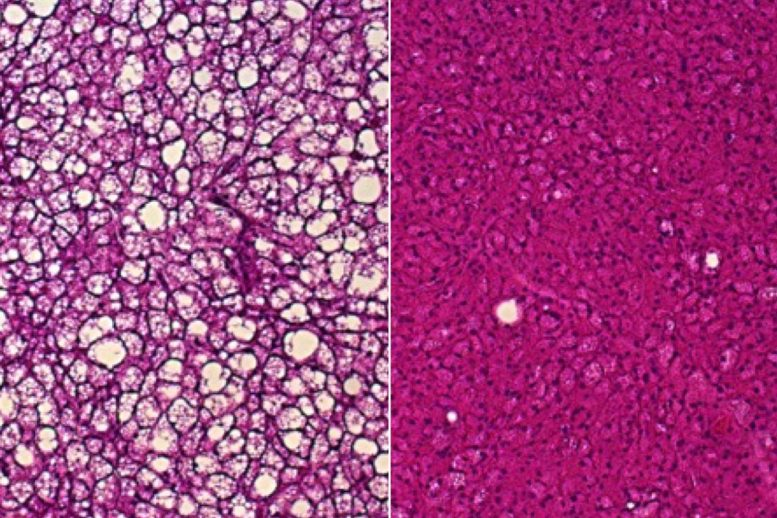New Brown Fat Pathway Could Make Weight Loss Easier to Maintain

Researchers from Washington University School of Medicine in St. Louis have uncovered a previously unknown mechanism in brown fat that could change the way we think about weight management and metabolic health.
The discovery, recently published in Nature (September 17, 2025), highlights a “backup heater” system in brown fat cells that burns energy in a surprising way and could open new avenues for treating obesity and related conditions such as insulin resistance.
Brown Fat vs. White Fat – A Quick Refresher
Our bodies contain different types of fat with very different roles. White fat is the kind most of us are familiar with—it stores excess calories for long-term use and is what accumulates around our belly, hips, and thighs. In contrast, brown fat is a more metabolically active type of fat. Its main function is to burn calories to produce heat, especially in cold environments.
There’s also muscle tissue, which provides immediate energy for activity, but brown fat stands out because it wastes energy on purpose, converting calories into heat rather than storing them. This makes brown fat particularly interesting in the context of weight control. Scientists have long believed that stimulating brown fat activity might help people burn more calories, making it a potential target for weight loss therapies.
The Traditional Heat-Generation Process in Brown Fat
Until now, the primary mechanism behind brown fat’s heat generation was thought to revolve around mitochondria—often called the power plants of cells. Mitochondria usually generate ATP (the cell’s energy currency), but in brown fat, they can switch roles through a protein called uncoupling protein 1 (UCP1). Instead of making ATP, UCP1 allows mitochondria to release energy as heat.
However, for years, researchers noticed something puzzling: even when mice lacked UCP1, their brown fat was still capable of burning energy and generating heat. This suggested that another, less understood alternative pathway was at work.
A Backup Heater – The Role of Peroxisomes
The new study sheds light on this mystery. Scientists found that peroxisomes, small structures inside cells that specialize in breaking down fatty acids, play a significant role as a backup heating system in brown fat.
When mice were exposed to cold temperatures, the number of peroxisomes in their brown fat increased dramatically. Even more striking, in mice that were missing UCP1, peroxisomes increased even more, suggesting they step in to help when the traditional mitochondrial pathway is impaired.
This discovery shifts the understanding of how brown fat functions. It means that peroxisomes can contribute to thermogenesis, offering a secondary way for the body to burn energy and stay warm.
The Key Player: ACOX2
At the center of this peroxisome-based heating process is a protein called acyl-CoA oxidase 2 (ACOX2). This enzyme is critical in the breakdown of certain fatty acids within peroxisomes.
The researchers ran experiments on genetically modified mice to explore ACOX2’s role:
- Mice lacking ACOX2 in their brown fat struggled to tolerate cold. They had lower body temperatures after cold exposure and displayed reduced ability to use insulin effectively. These mice also became more prone to obesity when fed high-fat diets.
- On the other hand, mice engineered to overproduce ACOX2 in their brown fat had the opposite results. They generated more heat, handled cold better, showed improved insulin sensitivity, and maintained healthier body weights—even when given the same high-fat diet.
To confirm these effects, the team used both infrared imaging and a fluorescent heat sensor they developed to measure heat production directly in brown fat cells. Both methods showed that ACOX2 activity boosts heat production, making it a critical part of this backup thermogenesis pathway.
Why This Matters for Humans
While the experiments were conducted in mice, the findings have significant implications for humans. The fatty acids metabolized by ACOX2 are not only produced in the human body but also found in dairy products, human breast milk, and even produced by gut microbes.
This raises exciting possibilities:
- Dietary interventions – Foods rich in these fatty acids or probiotics that promote their production could potentially stimulate this heat-generating process.
- Nutraceuticals – Supplements designed to boost ACOX2 activity might provide a way to tap into this pathway.
- Drug development – The researchers are also exploring compounds that could directly activate ACOX2 as a treatment for obesity and related metabolic disorders.
Past human studies already hint at the potential relevance of this pathway. People with higher levels of these fatty acids often show lower body mass indexes. However, the researchers emphasize that correlation is not causation, and more direct testing in humans will be needed.
Limitations and Future Research
It’s important to note that this discovery is still in the animal study stage. Mice provide valuable insights, but their physiology is not identical to humans. Future research will need to determine:
- Whether the peroxisome-ACOX2 pathway plays a significant role in human brown fat.
- How much it contributes to overall energy expenditure compared to other metabolic processes.
- Whether manipulating this pathway through diet, supplements, or drugs can safely and effectively improve metabolic health in humans.
Long-term safety will also need to be considered. While boosting resting energy expenditure sounds appealing for weight loss, any treatment targeting cellular metabolism must be carefully tested for side effects.
Broader Context: Why Brown Fat Excites Scientists
Brown fat research has been a hot topic for decades. Unlike white fat, which stores calories, brown fat is considered metabolically beneficial. Some important facts about brown fat:
- Location in humans: Brown fat is most commonly found in areas like the neck, shoulders, and around the spine.
- Activation: Cold exposure is a powerful trigger for brown fat activation. This is why practices like cold showers or cold exposure therapies have gained attention in the wellness world.
- Calorie burning potential: While brown fat alone is not a magic solution for weight loss, studies suggest that activating even small amounts of brown fat could significantly improve metabolic health.
The discovery of an additional thermogenesis pathway makes brown fat an even more promising target. If humans can benefit from both the traditional UCP1 pathway and the peroxisome-based ACOX2 pathway, the combined effect could be substantial.
Metabolic Health and Energy Balance
The idea of boosting resting energy expenditure is especially interesting because most weight-loss strategies focus on reducing calorie intake through dieting. The problem is that restrictive diets are often hard to sustain, and the body adapts by lowering metabolism, making it harder to keep weight off long-term.
A therapy that safely increases calorie burning at rest could complement lifestyle changes, helping people maintain weight loss without constant restriction. In addition, since the pathway appears to improve insulin sensitivity, it may also help in managing or preventing type 2 diabetes.
Funding and Patent Information
This study was supported by the National Institutes of Health (NIH) under multiple grant numbers: R01DK133344, R01DK115867, R01DK132239, GM103422, T32DK007120, S10 OD032315, DK020579, and DK056341, as well as funding from the FP7 European Infrafrontier-I3 project.
It’s also worth noting that Dr. Irfan Lodhi and Xuejing Liu are named on a provisional patent application filed by Washington University. The patent relates to therapies targeting ACOX2 activation as a treatment for obesity and metabolic diseases.
Conclusion
This discovery adds an exciting new layer to our understanding of how the body burns energy. By identifying peroxisomes and the protein ACOX2 as key players in brown fat thermogenesis, scientists may have found a new way to help the body burn calories more effectively. While human applications are still a way off, the potential for dietary strategies, nutraceuticals, and drug therapies makes this a promising area of research for the fight against obesity and metabolic disease.
Research Reference: Peroxisomal metabolism of branched fatty acids regulates energy homeostasis – Nature (DOI: 10.1038/s41586-025-09517-7)





